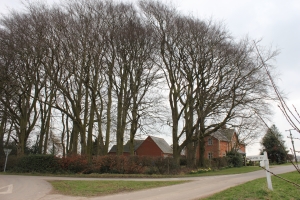Always wanted to know where Hockney created his famous painting? Find out here.
Who’d have thought, a couple of years ago, that a nice but seemingly unexceptional coppice of trees in the East Yorkshire countryside would be both the subject of an artwork acclaimed worldwide and also a minor tourist attraction? That we even know about them is, of course, down to David Hockney.
After Hockney made several paintings of the trees (which are about two miles from Warter) during early 2007, he then used 50 panels to create a massive single image called ‘Bigger Trees Near Warter or ou Peinture en Plein Air pour l’age Post-Photographique’, which was displayed in the Royal Academy later that year.
Interest in the site of the trees began to grow and, despite initially only a few locals knowing the exact location, photos of the trees began to appear on the internet and now a quick Google Maps search enables tourists to find the spot with ease. Getting a snap that captures as much of them as Hockney’s painting, however, is much more difficult.
The trees themselves, incidentally, are Sycamores.
To find the ‘Bigger Trees’: Follow the B1246 East out of Warter, take the second second right (signposted to Londesborough and Market Weight0n). The trees can be found after approximately 3/4 of a mile at the triangular junction with a signpost to Middleton.
Click here to find out more about Bigger Trees Near Warter on Wikipedia.
Click here to view images of Bigger Trees Near Warter.
Click here to view a video of Bigger Trees Near Warter’s unveiling.
Click here to find accommodation near Warter.


Hi Dave,
Contrary to popular opinion all the trees in the copse are beech trees. Most of the press releases and articles written about the copse have them as sycamores but they’re not.
The three trees at Thixendale are sycamores though. Hope you don’t mind me pointing it out.